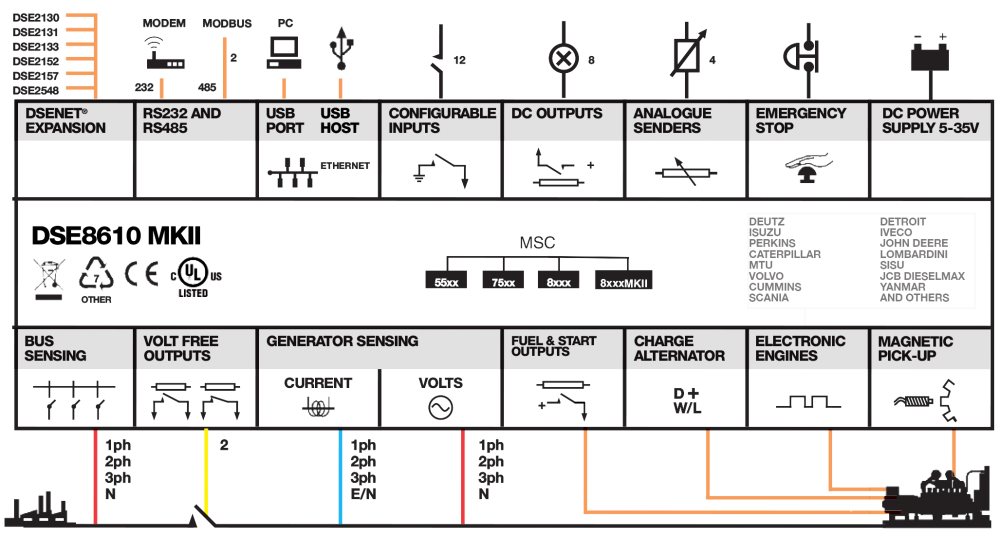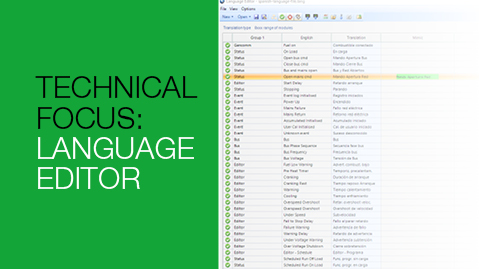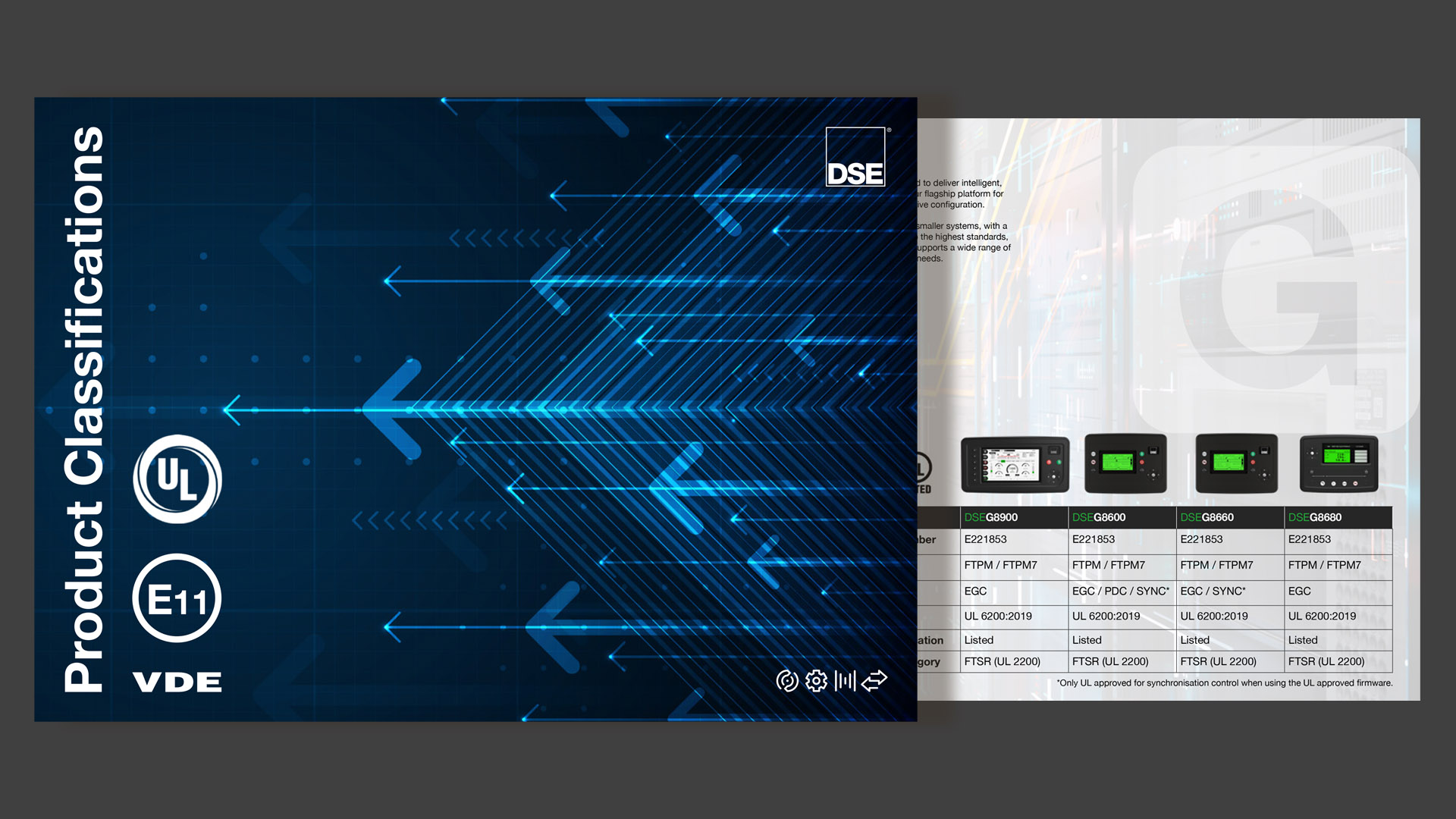Load Sharing & Synchronising Control Modules
DSE8610 MKII
Synchronising & Load Sharing Auto Start Control Module
Overall (W x H x D)
245 mm x 184 mm x 51 mm / 9.6” x 7.2” x 2.0”
Panel Cut-Out (W x H)
220 mm x 160 mm / 8.66” x 6.3”
Maximum Panel Thickness
8 mm / 0.31”
Request a Quote
Product Highlights
Key Features
Specification
DC SUPPLY
CONTINUOUS VOLTAGE RATING8 V to 35 V DC continuous
CRANKING DROPOUTS
Able to survive 0 V for 100 mS, providing supply was at least 10 V before dropout and supply recovers to 5 V. This is achieved without the need for internal batteries. Backlight will not be maintained during cranking.
MAXIMUM OPERATING CURRENT
530 mA at 12 V, 280 mA at 24 V
MAXIMUM STANDBY CURRENT
320 mA at 12 V, 160 mA at 24 V
CHARGE FAIL/EXCITATION RANGE
0 V to 35 V
VOLTAGE MEASUREMENT
NUMBER2
MEASUREMENT INPUTS
3 Phase + Neutral
Generator and Bus
VOLTAGE RANGE
15 V to 415 V Phase to Neutral
25 V to 720 V Phase to Phase
FREQUENCY RANGE
3.5 Hz to 75 Hz
CURRENT TRANSFORMER MEASUREMENT
NUMBER4
MEASUREMENT INPUTS
3 Phase Generator Current with Earth Fault Current
CURRENT RANGE
0 A to 1 A
0 A to 5 A
ANALOGUE INPUTS
NUMBER4
TYPE
Negative Switching Digital Input, Resistive Analogue Input, Current Analogue Inputs or Voltage Analogue Input
DIGITAL INPUTS
NUMBER12
TYPE
Negative Switching Digital Input
EMERGENCY STOP INPUT
NUMBER1
TYPE
Positive Switching Digital Input
MAGNETIC PICK-UP INPUT
VOLTAGE INPUT RANGE0.5 V Peak to 70 V Peak
FREQUENCY INPUT RANGE
1 Hz to 10 kHz
COMMUNICATIONS
USB A
1 Data Storage Port
USB B
1 Programming Port
DSENet®
1 Expansion Port
RS485
2 Fully Isolated RS485 Ports (Second RS485 port available in future update)
RS232
1 Modbus RTU Port
Ethernet
1 10/100 Ethernet Port
CAN
3 Fully Isolated CAN Ports
ECU - Engine ECU/ECm
MSC - MSC Link
CAN - Redundant MSC Link
TEMPERATURE
OPERATING TEMPERATURE
-30 °C to +70 °C / -22 °F to +158 °F
STORAGE TEMPERATURE
-40 °C to +85 °C / -40 °F to +185 °F
DIMENSIONS
OVERALL (W x H x D)
245 mm x 184 mm x 51 mm / 9.6 ” x 7.2 ” x 2.0 ”
PANEL CUT OUT (W x H)
220 mm x 160 mm / 8.66 ” x 6.3 ”
MAXIMUM PANEL THICKNESS
8 mm / 0.31"
Environmental Testing Standards
ELECTRO-MAGNETIC COMPATIBILITY
ELECTRICAL SAFETY
TEMPERATURE
VIBRATION
HUMIDITY
SHOCK
DEGREES OF PROTECTION PROVIDED BY ENCLOSURES
Connection Diagram




